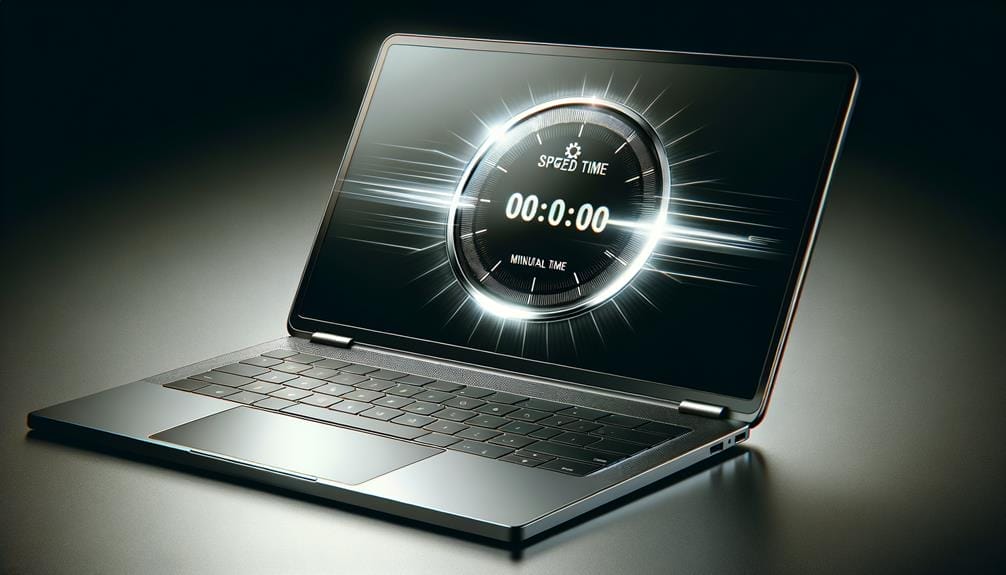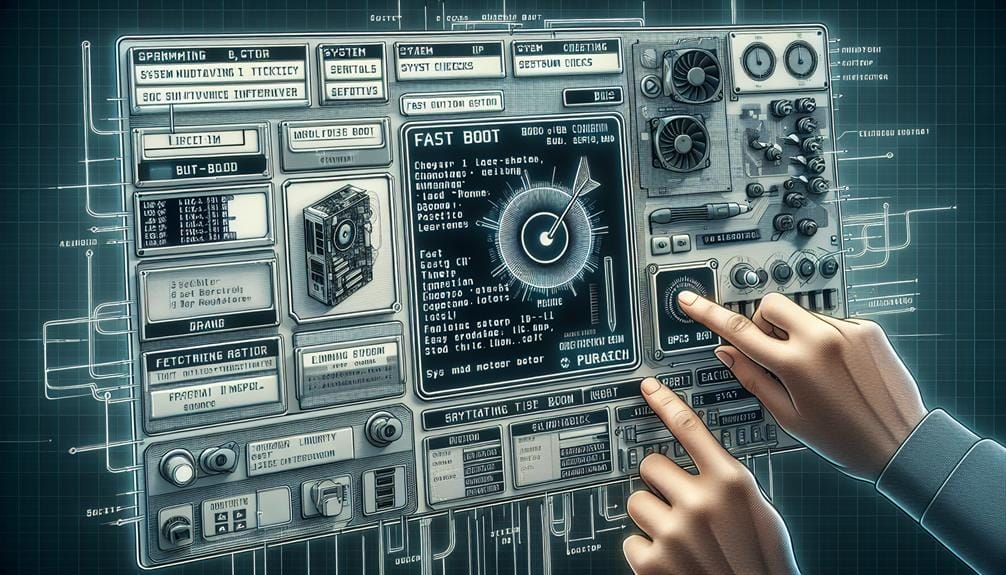Unlock Speedy Starts: Fast Boot Demystified

Tired of your computer booting up as slowly as a sloth enjoying a relaxed Sunday walk? Investigating the benefits of Fast Boot is essential for speeding up the start-up time of your computer. This is especially important for devices running on Windows 8 (or more recent versions) that rely solely on UEFI.
As you navigate through the ins and outs of Fast Boot, you'll uncover its potential to revolutionize your PC experience. But before you make the leap, there are important factors to consider and preparations to be made.
Get ready to take charge of your system's boot performance and discover the key to unlocking a whole new level of efficiency.
Key Takeaways
- Fast Boot is a Windows 8 (or newer) and UEFI-exclusive option for reducing boot times.
- Enabling Fast Boot significantly improves boot times, especially for HDD users.
- Fast Boot may lead to instability or boot loop after a system crash if combined with other issues.
- Fast Boot is not ideal for systems with multiple boot drives or multiple operating systems.
The Essence of Fast Boot

The essence of Fast Boot lies in its ability to optimize the boot process by utilizing a deep hibernation state and effective caching to significantly reduce boot times for Windows 8 (or newer) and UEFI-exclusive systems.
This fast boot technology transforms the shutdown sequence into a deep hibernation, preserving essential system files in a hibernation file. By doing so, it allows for a swifter boot-up experience.
Moreover, Fast Boot leverages efficient caching mechanisms to bypass time-consuming BIOS checks and swiftly retrieve data from the hibernation file. This innovative approach to improving boot times is particularly beneficial for users relying on HDDs, as it noticeably enhances the overall quality of PC usage.
However, it's important to consider potential drawbacks, such as system instability after crashes when enabling Fast Boot. Therefore, before enabling this feature, it's crucial to thoroughly assess hardware compatibility and potential limitations.
Benefits and Drawbacks
As you consider the essence of Fast Boot and its potential impact on your system, it's essential to weigh the benefits and drawbacks of enabling this feature.
- Impact on system stability: Enabling Fast Boot may lead to instability or boot loops after a system crash.
- Performance comparison with different storage devices: While Fast Boot significantly improves boot times, especially for HDD users, its benefits for SSD users are minimal. Additionally, enabling Ultra Fast Boot may limit access to the BIOS in case of problems.
- Compatibility with multiple boot drives and operating systems: Fast Boot isn't ideal for systems with multiple boot drives or multiple operating systems, and Linux installations or fresh Windows OS installs may be affected.
Considering these factors will help you make an informed decision about whether to enable Fast Boot on your system.
Compatibility Considerations

Considering hardware compatibility is crucial before enabling Fast Boot on your system. Two vital aspects to assess are RAM compatibility and the necessity of BIOS updates.
| Consideration | Details |
|---|---|
| RAM Compatibility | Some RAM modules may not be compatible with Fast Boot, leading to boot failures or errors. |
| BIOS Updates | Ensure your motherboard's BIOS is up to date to support Fast Boot functionality. |
Checking RAM compatibility is important as certain modules may not work optimally with Fast Boot, potentially causing boot issues. Additionally, updating the BIOS to the latest version is essential for seamless Fast Boot operation. By addressing these compatibility considerations, you can ensure a smooth transition to Fast Boot without encountering hardware-related obstacles.
Pre-Enabling Preparations
Before enabling Fast Boot, it's essential to address compatibility considerations, such as RAM modules and BIOS updates, to ensure a smooth transition to faster boot times without encountering hardware-related obstacles. Here are some pre-enabling preparations to keep in mind:
- Updating BIOS to the latest version is recommended before enabling Fast Boot.
- Consult the manufacturer's documentation or support resources to ensure hardware components are compatible with Fast Boot.
- Be aware of the potential limitations and drawbacks of Fast Boot to make an informed decision.
Accessing BIOS With Fast Boot

To access the BIOS with Fast Boot enabled, utilize the Windows Advanced startup options to restart and access UEFI Firmware Settings. If you encounter difficulty accessing the BIOS with Fast Boot enabled, try troubleshooting BIOS access by following these steps:
- First, ensure that your keyboard is connected directly to the computer and not through a USB hub.
- Then, attempt to access the BIOS by repeatedly pressing the designated key during the boot process, which is often the Delete, F2, or F12 key.
- If this method doesn't work, you can also try accessing the BIOS through the Windows settings by going to Update & Security, selecting Recovery, and clicking on Restart Now under the Advanced startup section.
- From there, choose Troubleshoot, Advanced options, UEFI Firmware Settings, and then Restart.
Fast Boot for SSD Users
Having successfully accessed the BIOS with Fast Boot enabled, SSD users may now explore the potential impact of this feature on their system's boot performance.
- SSD performance: Fast Boot may yield minimal benefits for SSD users due to their already fast boot times.
- Boot optimization techniques: SSDs inherently offer rapid boot speeds, diminishing the noticeable impact of Fast Boot.
- Risk evaluation: While Fast Boot may not significantly enhance SSD performance, it's essential to weigh the potential risks, especially when considering the Ultra Fast Boot option.
Individualized Decision Making

When considering whether to enable Fast Boot on your system, it is important to weigh the potential benefits and drawbacks based on your individual needs and system configurations. Fast Boot can significantly improve boot times, especially for HDD users, but it may lead to instability or boot loop after a system crash. Enabling Ultra Fast Boot may limit access to the BIOS, and it's not ideal for systems with multiple boot drives or operating systems. To help you make an informed decision, consider the following factors:
| Decision Making | Potential Risks |
|---|---|
| Hardware compatibility | Instability after system crash |
| System configuration | Limited access to BIOS |
| BIOS update | Issues with multiple boot drives |
Considering these factors will allow you to make an individualized decision regarding whether to enable Fast Boot, minimizing potential risks.
Conclusion
In conclusion, understanding Fast Boot and its impact on your system is crucial for optimizing boot times. By weighing the benefits and drawbacks, considering compatibility, and making individualized decisions, you can harness the power of Fast Boot to unlock speedy starts for your Windows 8 (or newer) and UEFI-exclusive system.
Take control of your PC usage and make informed decisions to enhance your overall computing experience.

